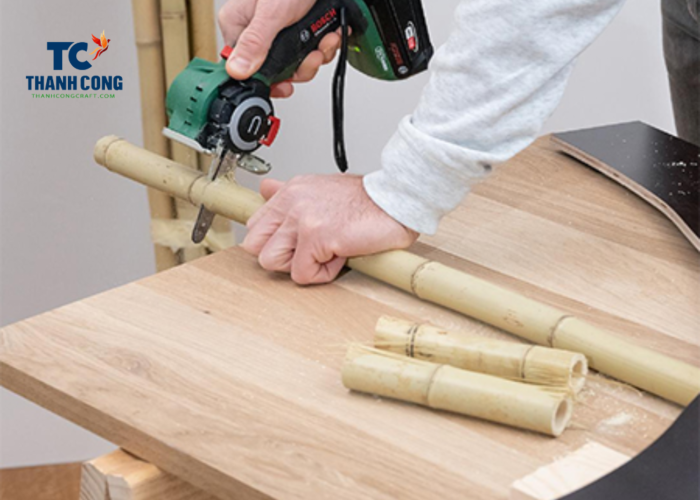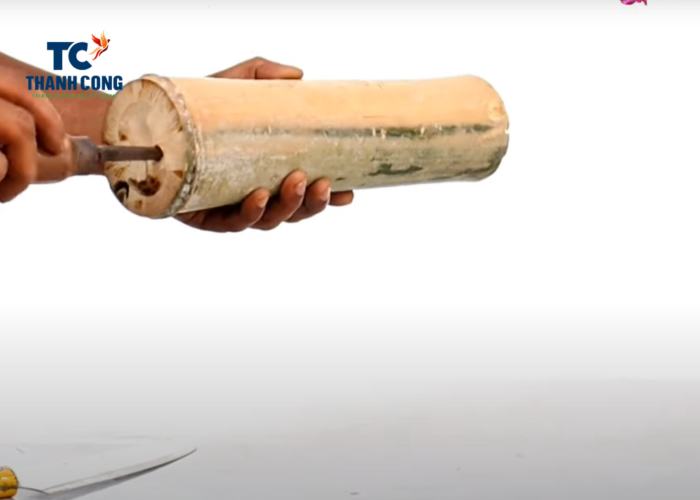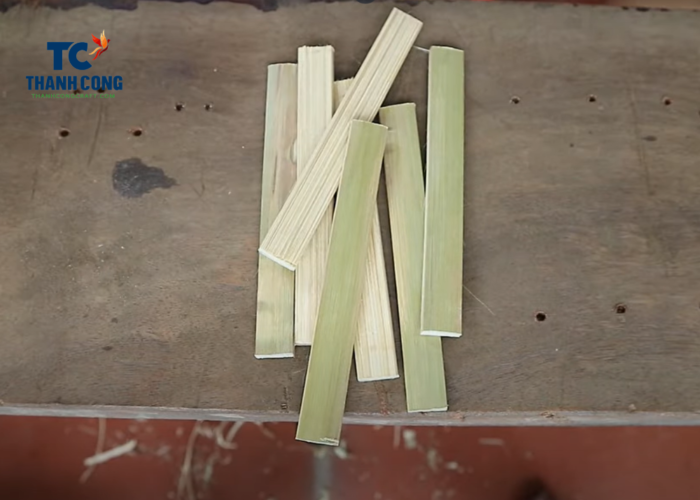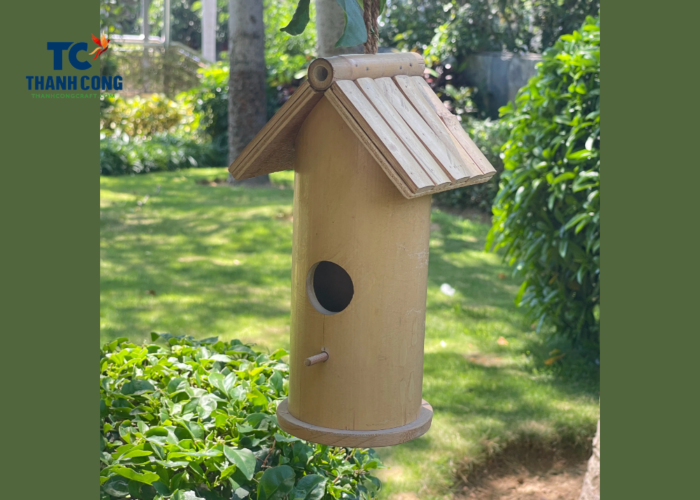Incorporating a bamboo birdhouse into your garden doesn’t just enhance its aesthetic appeal; it serves as a haven and nesting spot for wild birds as well. For those passionate about birds, the question of how to make a bamboo birdhouse might pique your curiosity.
This article is designed to lead you through the fundamental steps, enabling you to create a straightforward yet robust and long-lasting bamboo birdhouse.
Contents [hide]
1. How to make a bamboo birdhouse?
Make a diy birdhouse from bamboo is a rewarding endeavor that not only adds charm to your garden but also provides a safe haven for wild birds. Follow these simple steps to craft a durable bamboo birdhouse and contribute to the well-being of our feathered friends.
Materials Needed:
- Bamboo Stalks: Select sturdy and straight bamboo stalks. Ensure they are of appropriate length, considering the size of the birdhouse you intend to build.
- Saw: A saw will be essential for cutting the bamboo stalks to the desired lengths.
- Drill: Use a drill to create openings for the entrance and ventilation holes.
- Sandpaper: Smooth the edges of the bamboo pieces to prevent any injuries to the birds.
- Twine or Rope: For securing the bamboo pieces together.
- Wood Glue: To reinforce joints and enhance the birdhouse’s stability.
Step-by-Step Guide:
- Step 1:
To make a bamboo birdhouse, it’s better to choose a bamboo stem with a diameter of about 10-15 cm and cut a section of about 30 cm long. This will be the body of the birdhouse.
It will be suitable for popular small birds such as Goldfinch, Finch, Song Sparrow,…

- Step 2:
Use a knife to cut a round hole with a diameter of about 5 cm in the middle of the body. This will be the entrance of the birdhouse.

- Step 3:
Use scissors to cut two pieces of bamboo about 20 cm long and 10 cm wide. These will be the two roofs of the birdhouse.

- Step 4:
Use rope to tie the two pieces of bamboo to the two ends of the body, forming an A shape. Make sure that the pieces of bamboo cover the body and there are no gaps.
- Step 5:
Use rope to tie a large loop to the top of the birdhouse. This will be the hook to hang the birdhouse on a tree or elsewhere.

2. FAQs
2.1 How high should bird houses be mounted?
The ideal height for mounting birdhouses is contingent upon the species of birds you aim to attract. In general, for smaller birds such as chickadees or wrens, it is recommended to mount birdhouses at a height ranging from 5 to 10 feet above the ground. This elevation provides protection against ground predators.
On the other hand, if your goal is to attract medium to large birds like bluebirds or tree swallows, consider placing birdhouses at a higher position, typically between 10 to 20 feet above the ground. This elevation emulates their natural nesting environments, offering a heightened sense of security.
When determining the mounting height, it is crucial to take into account the specific nesting preferences of the targeted bird species. Some birds naturally favor higher locations, while others may prefer nests closer to the ground. Conducting research on the habits of the birds you wish to attract will provide valuable insights into the optimal height for your birdhouse.
Additionally, to enhance the safety of the nesting environment, ensure the birdhouse is mounted high enough to deter easy access for potential predators such as cats and raccoons. Consider incorporating predator guards on the mounting pole for an added layer of protection.
Always refer to species-specific guidelines for accurate information, as preferences can vary. It’s also important to securely attach the birdhouse to a stable structure and conduct regular monitoring for maintenance and cleaning to ensure a welcoming and safe space for our feathered friends.
2.2 Should birdhouse be in sun or shade?
Determining the ideal placement for a birdhouse involves careful consideration of both sunlight exposure and shade, a decision influenced by the bird species and local climate. As a general guideline, selecting a location that receives morning sunlight while offering shade during the hottest part of the day is advisable. This balanced exposure helps regulate the temperature inside the birdhouse, creating a comfortable environment for nesting birds.
When situating the birdhouse, attention should be paid to the facing direction. Orienting the entrance away from direct sunlight, preferably towards the north or east, can shield the interior from the intense afternoon sun. Additionally, understanding the specific climate of your region is essential. In hotter climates, providing ample shade becomes crucial to prevent the birdhouse from overheating.
2.3 What direction should the front of a birdhouse face?
To ensure the comfort of nesting birds, it is generally advisable to position the front of the birdhouse away from direct sunlight, especially the intense afternoon sun. Facing the entrance towards the north or east helps mitigate the impact of harsh sunlight, contributing to a more hospitable environment for the birds and their potential offspring.
Additionally, protecting the nest from the elements is essential. Placing the birdhouse away from prevailing winds and driving rain can safeguard the nest, providing a stable and secure space for nesting birds.
Predator deterrence is another critical factor in determining the orientation of the birdhouse. Facing the entrance toward a natural barrier, such as a tree trunk or dense vegetation, makes it more challenging for potential predators to access the nest, enhancing the safety of the nesting environment.
Importantly, different bird species may have specific preferences regarding the orientation of their nesting sites. Researching the habits and preferences of the targeted birds provides valuable insights into the optimal direction for the birdhouse entrance.
2.4 What attracts birds to a new birdhouse?
Several factors can attract birds to a new birdhouse, making it a welcoming and enticing nesting site. Consider the following elements:
- Location: Choosing an optimal location is critical. Birds prefer birdhouses that are strategically placed, offering a sense of security. Ensure the birdhouse is placed at an appropriate height, away from ground predators, and in a spot with good visibility for the birds.
- Natural Surroundings: Birds are more likely to be attracted to a birdhouse that blends into its natural surroundings. Positioning the birdhouse near trees, shrubs, or other foliage provides a familiar environment and can make the birds feel safer.
- Proper Sizing and Design: The dimensions and design of the birdhouse matter. Different bird species have specific preferences for entrance hole size, interior space, and overall design. Research the requirements of the birds you want to attract and tailor the birdhouse accordingly.
- Orientation and Sunlight: Properly orienting the birdhouse is essential. Facing the entrance away from prevailing winds and direct sunlight, particularly the harsh afternoon sun, ensures a more comfortable environment for nesting birds.
- Cleanliness: Birds prefer clean and well-maintained nesting sites. Regularly clean out old nests after the breeding season to make the birdhouse more appealing for the next occupants.
- Predator Deterrence: Implementing predator deterrents, such as baffles or predator guards, can make the birdhouse more secure. Birds are more likely to choose a nesting site that offers protection from potential threats.
- Availability of Food and Water: Providing a bird-friendly environment with a nearby source of food and water can attract birds to the area. Bird feeders, birdbaths, and native plants that produce seeds or attract insects contribute to the overall attractiveness of the habitat.
Hopefully, with the “how to make a bamboo birdhouse” instructions provided in the above article, you can create your own unique birdhouses to enhance the charm and liveliness of your garden.
If you have any further questions, don’t hesitate to send thanhcongcraft an email us at info@thanhcongcraft.com or directly contact us via Tel/WhatsApp: +84967485411. Hope to serve you soon! Best regard!


